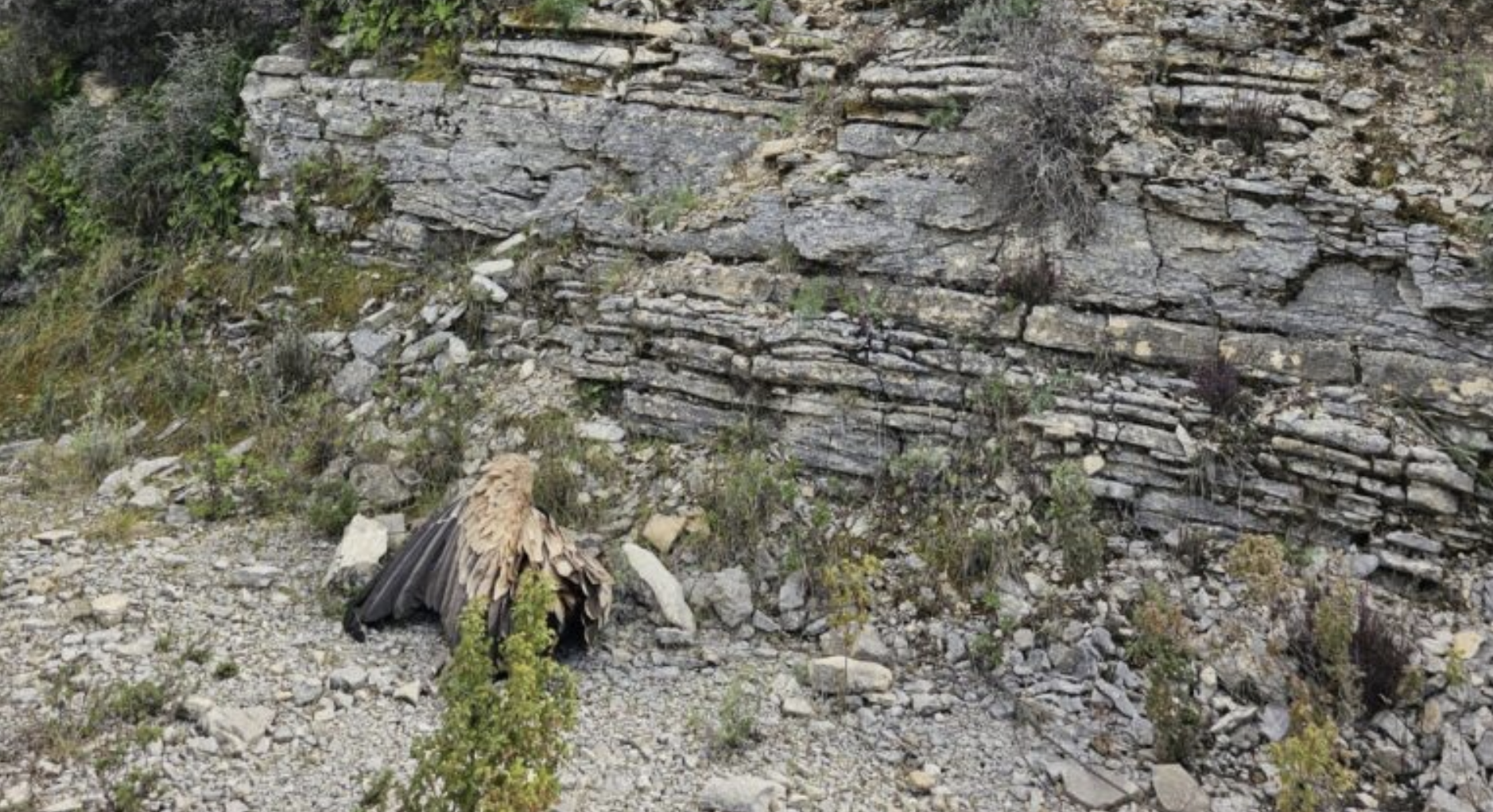
It seems that 2020 is shaping up to be a relatively good year for the Griffon Vulture population in Cyprus. The latest breeding survey confirmed three active nests, which is optimistic news since this is the second time in the last decade that there are more than two active nests.
Monitoring Griffon Vultures in Cyprus
BirdLife Cyprus has been monitoring the Griffon Vulture population in Cyprus for a decade now. As part of LIFE with Vultures, the project launched an intensive breeding monitoring scheme this year, consisting of targeted checks at nesting sites, which complement BirdLife Cyprus’ annual vulture census’ that occur every spring and winter. Despite the ongoing COVID-19 pandemic, the team managed to keep an eye on the breeding vultures through this new nest monitoring scheme, taking the appropriate precautions, of course.
Latest Griffon Vulture breeding survey in Cyprus
Having identified three territorial pairs at Akrotiri Peninsula – Episkopi Cliffs IBA during the January census, the LIFE with Vultures team continued to check up on this site, the vultures’ current stronghold, and other likely nesting sites throughout the spring months. There were some ups and downs during March and April, as some nests were ‘lost’ yet others were ‘gained’. By May, there were still three nesting pairs, but now located at two different sites, one pair at Akrotiri Peninsula – Episkopi Cliffs IBA and two pairs at Chanoutaris Cliffs SPA. Both nesting sites are located in remote cliffs and provide suitable nesting habitat for the species.
Akrotiri Peninsula – Episkopi Cliffs IBA has historically hosted the main Griffon Vulture colony in Cyprus and continues to be the most active nesting site for the species on the island today. Chanoutaris Cliffs SPA is also a historically significant site for the species as it used to host one of the most important Griffon Vulture colonies in the past. Since the 1990s, a feeding station located within this site, operated by the Department of Forests, has also been providing safe food for the vultures.

On 22 May 2020, LIFE with Vultures carried out the fourth vulture breeding monitoring survey for the year with the help of a small number of surveyors, including BirdLife Cyprus staff, Game and Fauna Service officers and SBA Environment Department officers. Since Griffon Vultures started laying their eggs in January, and with the incubation period lasting up to two months, there was hope that several chicks hatched.
The teams at Chanoutaris Cliffs SPA successfully located the two nests, and each contained a chick — one clearly more developed than the other. Parents were taking care of and feeding their chicks at both nests. Both of the nests belong to pairs of Cretan (tagged) vultures (brought to Cyprus from Crete through the GYPAS project). One of the Cretan pairs consists of a 9-year old female with the tag ‘FAA’ that was brought to Cyprus in June 2012 and an 8-year old male with the tag ‘AAJ’ brought to Cyprus in December 2013. This same pair had nested in the Chanoutaris cliffs SPA in 2017 and had also attempted to nest there in 2015. Both chicks are expected to fledge by July.
In contrast with the good outcome at Chanoutaris Cliffs SPA, with two active nests and as many as eleven Griffon Vultures seen soaring overhead at one point, at Akrotiri Peninsula – Episkopi Cliffs IBA, the day was much quieter. There were no vultures to be seen throughout the day. This was worrying because checks earlier in the spring suggested there were up to two active nests in the area. On 22 May, however, there was no activity recorded at either nest site, suggesting all nests at the cliffs had been abandoned. Fortunately, two days later the team revisited the site and confirmed the active status of one nest, with both parents, one Cypriot and the other Cretan, being present and feeding their chick. This chick is expected to fledge by the end of June.
The project team will continue with the regular monitoring of the nests on a two-week basis to observe the fledging process of the chicks and make sure that they remain safe. The existence of three breeding pairs is more than great news, but, unfortunately, it is not nearly enough. The critically low Griffon Vulture population (currently at around 20 individuals) and the precarious status of the species on the island, means that without targeted conservation measures, the Griffon Vulture is unlikely to bounce back. To preserve the remaining population and promote a sustainable population, the LIFE with Vultures project came to life.
LIFE with Vultures

LIFE with Vultures is a targeted conservation project for the protection of the Griffon Vulture in Cyprus. In this four-year endeavor (2019-2023), BirdLife Cyprus, the Game and Fauna Service, Terra Cypria – The Cyprus Conservation Foundation and the Vulture Conservation Foundation have joined forces to tackle the main threats facing the Griffon Vulture and prevent Cyprus’ most threatened bird of prey from going extinct. The project has a 1,375,861 Euro budget and is co-funded (60%) by the EU’s LIFE programme.




